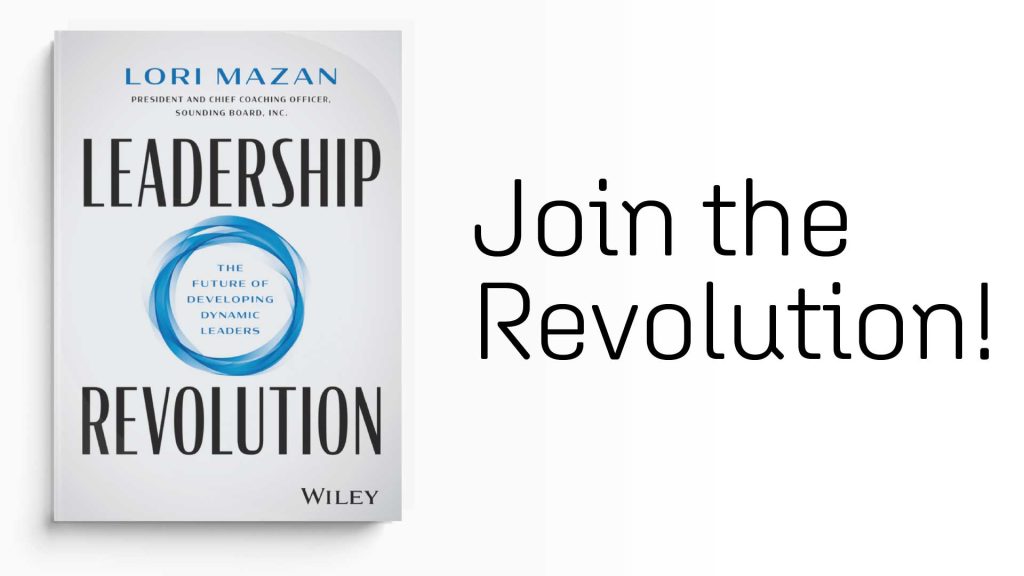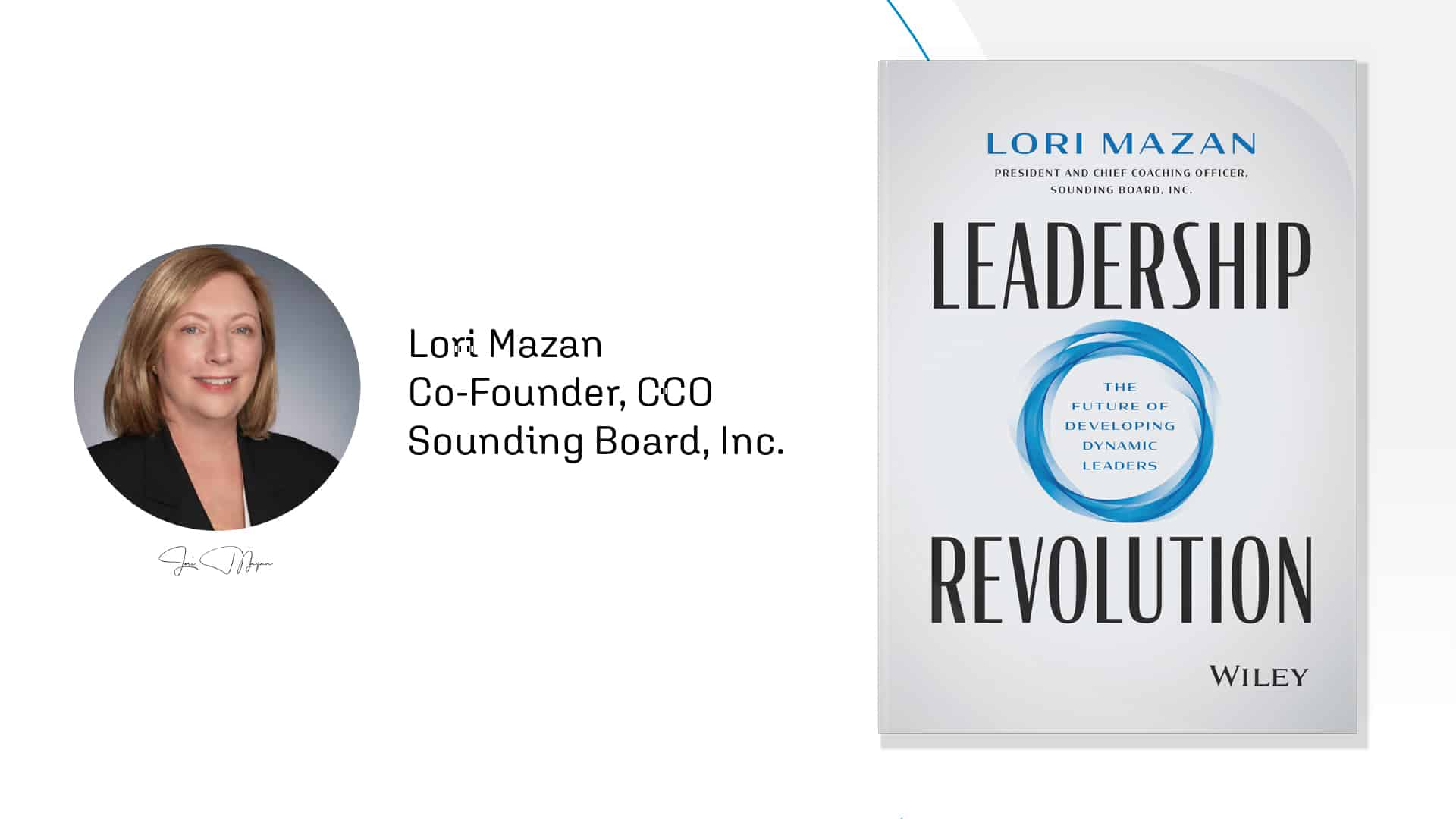Sounding Board Co-founder, Chief Coaching Officer, and President Lori Mazan has announced the upcoming release of her book Leadership Revolution: The Future of Developing Dynamic Leaders. We asked Lori for some insights into what learning and talent development professionals, managers, and executives can expect from her book.
Q: What lead you to write 'Leadership Revolution'?
Lori:
I have been thinking about writing a book ever since I retired from my private coaching practice. After 20 years, I actually started writing a book back then. It was called Leadership Lessons From The Practice of Tai Chi Chuan. I never finished it because I ended up starting a company and growing that company. So now I’ve written this book, Leadership Revolution. And it’s almost like a memoir. It’s like a compilation of my own experience and what I’ve learned over a career of almost 40 years. I hope it’ll be a fun read because of that. it’s a blend. It’s a little more personal, but it also has lots and lots of experience, history, information, and ideas in it as well.
Q: What did you learn about yourself and the leadership journey by writing the book?
Lori:
I learned that I am actually more structured than I realized. I think the thing you always learn through coaching and almost any experience, I can do a lot more than I thought. I actually wrote two chapters a month and finished the book within six months. I interviewed a number of founders, CEOs, and presidents who had written a book while running a company, and they all said it couldn’t be done. I did it anyway. I found that these two things — writing and running Sounding Board — blended and worked well together. The clearer I became on my book message, the clearer I became on the future pathway for the company as well. The ultimate outcome would be if I became a better leader and empowered readers to become better leaders. How can you lose with that?
Q: While not a coaching engagement, the book follows the structure of one. Why did you decide to structure it in this way?
Lori:
I think mostly because that’s the structure I’ve used for over 25 years. It’s a really great developmental structure. It’s great for developing a leader, a person, an idea, a company, a child — whatever it is you’re growing. It’s a very helpful structure for growing things. The other reason I chose to do that is I’m very fond of an author named John McVee who wrote a book called Levels of The Game about Arthur Ash, a famous tennis player. I loved how he interspersed the game of tennis into the whole story in the history and experience of Arthur Ash. It gave a depth that you normally don’t get from reading a book. I had read that book a couple of times and really liked that model so decided to use something similar for this book as well.
Q: What is the one lesson you would want existing or potential leaders to take away from Chapter 1?
Lori:
I will say at least two things. First, there is not one right way to be a leader. There are infinite numbers of ways to be a leader. I’m really not a fan of those approaches where if you have these five traits, you will be an excellent leader. I have never found that to be true. I find that the best, most successful leaders are a blend of skills, capabilities, capacities, and who they are naturally as a person. That authentic, skillful blend works really well. Another takeaway is to always be thinking of the big leap like you’re never done. I think you should always be looking for the next leap. And that’s what keeps you and your life vital and interesting and exciting and continually growing and evolving.
Q: How do you gain clarity when the world is anything but clear?
Lori:
Well, for one thing, we’re having to do this a lot more recently than I think we had done in the last century. I think clarity is an inside job. It really comes from an internal space where you have your internal compass. You’re able to have some clarity where your ego and all the activity that surrounds you and your biases are not coloring your vision. You have to kind of look and listen and feel for the heart of the issue, the core of the issue. It’s one of the capacities that coaches develop where they can just put their finger on the heart of the issue pretty easily. They can at least name it, though it may not be easy to solve. But at least you can have clarity around what it is you’re dealing with. I use the example of the eye of the storm; everything can be swirling all around you. But in the center of that storm, it’s nice and clear. It’s calm and the sun is shining.
Q: What is "The Big Leap" and how does one identify "The Big Leap" a leader, manager, or coachee needs?
Lori:
It’s the next big place for the leader to go. It’s a shift in mindset, a brand new way of thinking that’s on a different level than the level that you’re currently on. The big leap can really mean just about anything. It’s that place where you’re leaping off the cliff and you don’t know what’s gonna happen once your feet are off the ground. It’s that place you often know you need to go, but you’re afraid to go. You are holding back, you are scared, you are unsure, but at some point, it’s time to take that big leap and see what happens. You can identify it by the place you don’t want to go, the thing you’re avoiding, or the blind spot for you. You can also identify it by identifying where you’re facing contradictions, a place where you have a lack of alignment. You know you got it when your whole system goes, “Right. That’s it. That’s the big leap.”












